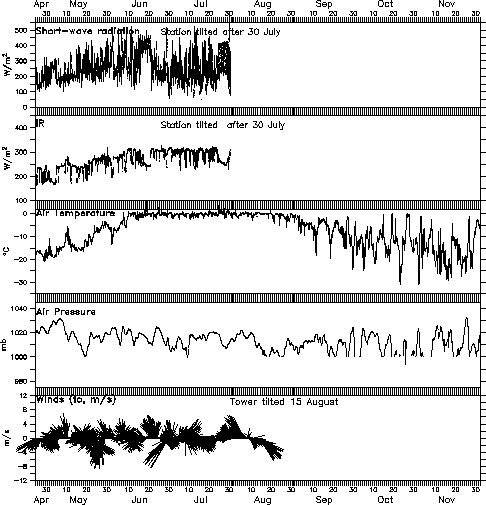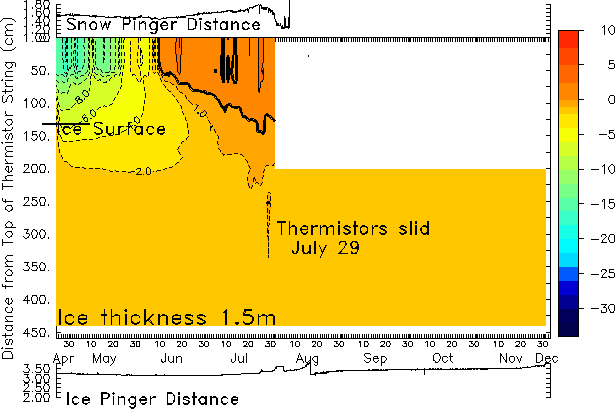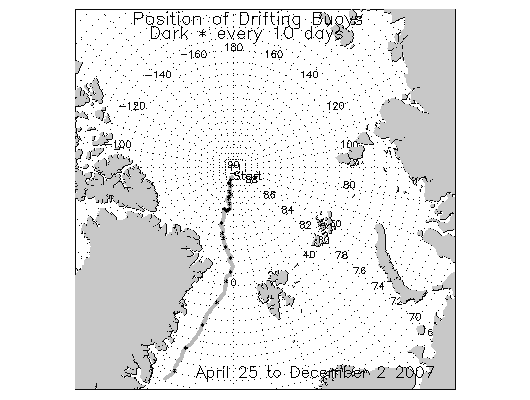North Pole Weather Data from 2007 Deployment
Weather data plot
Ice-temperature plot
Map of station drift
Weather plot: This plot presents incoming short-wave solar radiation measured by one of the radiometer buoys, along with air temperature, air pressure, and winds measured by the meteorological station.
Download preliminary data: 22206_plot.wx 20726_tenmin.rad (click for header information)

Latest data (updated approximately weekly)
![]()
Ice-temperature plot: Plots of air, ice, and ocean temperature as measured by Mass Balance buoys developed by CRREL. The buoys at the Borneo site were funded through PMEL.
The radiometer buoy tilted 53 degrees on July 30, and the through-ice thermistors slid down on the CRREL buoy (seen in graphic below). The radiometer records actually look like the instruments were tilted a bit before that, but the tilt sensor was still reasonable until the 30th-31st.
The floe has melted out or broken up (December 2, 2007).
Download preliminary data: 09114.cplot 09114.ping (click for header information)

Latest data (updated approximately weekly)
![]()
Map of station drift: Drift of the North Pole station since its deployment in April 2007. Station locations are obtained from the ARGOS system.

Latest data (updated approximately weekly)
Click here to calculate sunrise/sunset times for any location on the earth.
![]()
| • Web cam Home and Acknowledgments | |
| • Daylight and Darkness at the North Pole | |
| The North Pole Web Cam is part of the North Pole Environmental Observatory, a joint National Science Foundation-sponsored effort by the Polar Science Center, / APL / UW, the Pacific Marine Environmental Laboratory / NOAA, the Japan Marine Science and Technology Center, Oregon State University, and Cold Regions Research and Engineering Laboratory. |



